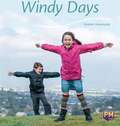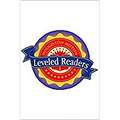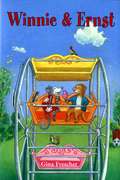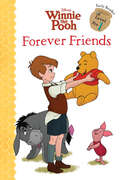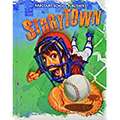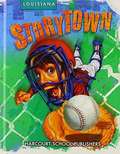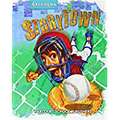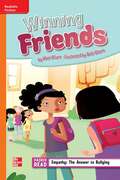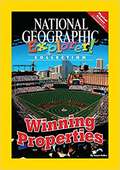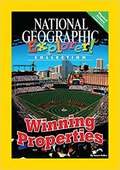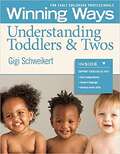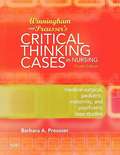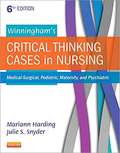- Table View
- List View
Window to the Sky
by James Flood Diane Lapp Nancy Roser William H. Teale Karen D. Wood James V. Hoffman Carl B. Smith Elaine Mei Aoki Virginia A. Arnold Miriam Martinez Annemarie Sullivan Palincsar Michael Priestley Josefina Villamil Tinajero Arnold W. Webb Peggy E. WilliamsThe book contains good materials for reading.
Windows to Algebra and Geometry: An Integrated Approach
by Ron LarsonAs you study this book you will be able to understand the value and purpose of what you are learning. That's why the book begins each lesson explaining what you should learn and why you should learn it.
Windows to the World: An Introduction to Literary Analysis
by Lesha MyersWhy do certain literary works have the power to move us? With step-by-step instructions, Windows to the World teaches students how to analyze elements of literature. This reference also gives numerous examples and suggestions for helping students develop Christian discernment skills.
Windy Days (Into Reading, Level I #15)
by Heather HammondsNIMAC-sourced textbook <p><p> On windy days, we can hear the wind blow. We can feel the wind. The wind makes things move.
Wings in the Lodge (Fountas & Pinnell Classroom, Guided Reading Grade 3)
by Craig Orback Andrea TardiffNIMAC-sourced textbook
Wings of Poesy Class 9 and Class 10 - Meghalaya Board
by B. T. Brooks'Wings of Poesy' is a collection of short poems, reflective of and reflecting upon various moods, aspects and realities of life. They are all an expression of intense emotions that have taken the form of a manifestation in words. These are fourteen poems, capturing a variety of expressive moments of life, ranging from philosophy, sensitivity, sympathy to empathy. Most of them are reflective and philosophical in tone and matter, while two are pure humour.
Winnie & Ernst
by Gina FreschetFour funny, easy-to-read stories about best friendsWinnie (a possum) and Ernst (an otter) are best friends who can weather any predicament together. These charming, screwball stories have the pair looking desperately for the gift Winnie has gotten for Ms. Zora Beaver's birthday party and lost in her own house; making Aunt Sally's Famous Nut Loaf for a bake sale, but forgetting an important ingredient; bringing the outdoors in for a first-day-of-spring garden party nearly ruined by a snowfall; and learning the repercussions of breaking a mirror, not once, but twice. The silliness and the brightly colored pictures will have early readers eager to make the happy acquaintance of these two new characters.
Winnie the Pooh: Forever Friends
by Disney PressIn this easy-to-read story about friendship and funny hijinks in the Hundred-Acre Wood, Piglet helps Pooh and his friends save the day when they believe a scary creature has captured Christopher Robin!
Winning America: Working Together in the Colonies (Heritage Studies 2 for Christian Schools)
by Dawn Watkins Kimberly PascoeHeritage Studies 2 Winning America, Working Together in the Colonies brings to life the American heritage of many students, explaining the lifestyle of the early English colonists. Colonial farming, shop-keeping, clothing, politics, famous people, early wars and more are covered in an age-appropriate manner. Geography, alignment with Bible Truths, some world history, government, economics and culture are all presented with a view to promote the understanding of American history. Through this study, students will learn to sequence events, summarize data, make predictions, identify sources of information, work with graphs and formulate opinions.
Winning Big (Fountas & Pinnell Classroom, Guided Reading)
by Pat Schmatz Avi KatzNIMAC-sourced textbook
Winning Catch (Georgia)
by Isabel L. Beck Roger C. Farr Dorothy S. StricklandNIMAC-sourced textbook
Winning Properties, Pathfinder Edition (National Geographic Explorer Collection)
by Susan HalkoNIMAC-sourced textbook
Winning Properties, Pioneer Edition (National Geographic Explorer Collection)
by Susan HalkoNIMAC-sourced textbook
Winning Ways For Early Childhood Professionals: Understanding Toddlers and Twos
by Gigi SchweikertUnderstand the complex—yet amazing—toddler years as you help children develop new skills <p><p> One- and two-year-olds are in the midst of developing and exploring their skills to communicate, move purposely, and assert their independence and individuality. As their teacher, you have great patience, energy, and creativity as you work with their “on the go” approach to life. <p><p>Use this professional development workbook to help navigate the complex toddler years and gain a better understanding of their growth and development. You will improve your interactions with them by responding to their individual needs, find out how to create a routine and environment that keeps toddlers safe as they explore and learn, and assist them as they develop self-help skills such as toileting, dressing, and eating. <p><p>This is a great educational and training tool whether you are a veteran educator, new teacher, college student, or career seeker. You’ll learn fascinating facts, and you’ll be reminded of how important your job as an early childhood professional truly is.
Winningham and Preusser's Critical Thinking Cases in Nursing: Medical-surgical, Pediatric, Maternity, and Psychiatric Case Studies (4th edition)
by Barbara A. PreusserThe fourth edition of this collection of case studies for nursing students and practitioners offers 148 examples that foster creative thinking skills in medical-surgical, pediatric, maternity and psychiatric situations. Preusser (family nurse practitioner, Veterans Administration Medical Center, Utah) groups these case studies according to body systems for a quicker access to vital information, and she illustrates the changes, complications and therapeutic interventions that may occur for each example. This latest edition also provides a new approach to prioritization tasks in clinical environments.
Winningham's Critical Thinking Cases In Nursing: Medical-Surgical, Pediatric, Maternity, and Psychiatric
by Julie S. Snyder Mariann M. HardingHighly regarded for its clinically relevant and thought-provoking content, Winningham's Critical Thinking Cases in Nursing, 6th Edition features 150 case studies that cover all four clinical practice areas: medical-surgical, pediatric, OB/maternity, and psychiatric nursing. Each case covers a common patient problem, drawn from actual clinical experiences and written by nurses who are clinical experts. This edition reflects the most current standards of clinical practice, including content on pharmacology, nutrition, and diagnostic/laboratory tests to prepare you for all aspects of patient care. From nursing educators Mariann Harding and Julie Snyder, this workbook helps you develop your clinical nursing judgment and bridge the gap from nursing knowledge to nursing practice.

